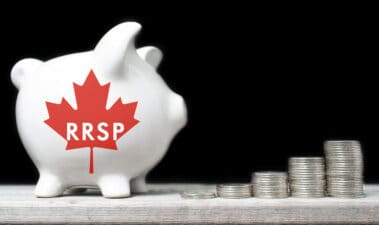The impact of the COVID-19 outbreak on employment could be so much worse than in 2008-2009. This time, the consequences are more frightening. The unemployment rate peaked at 8.3% then. But based on the forecast by Parliamentary Budget Officer Yves Giroux, the unemployment rate in Canada could rise to 15% in the third quarter of 2020.
Before the coronavirus-induced economic downturn went into high gear, about 19 million Canadians were employed. Mass layoffs accelerated in the third week of March 2020. According to the Canada Revenue Agency (CRA), more than 7.1 million people have applied for the Canada Emergency Response Benefit (CERB). This taxable benefit amounts to $500 per week or $2,000 every four weeks. Workers who lost income will receive emergency money for up to four months.
The staggering number of applicants is a clear indication of the widespread impact of the lockdown on Canada’s economy. If you’re in dire financial straits too, know if you can apply for the benefit.
Expanded criteria
The original CERB focused at first on the fully employed. However, access to the CERB was limited for people who were underemployed. This group includes part-time and seasonal workers. In addition, people whose work hours were reduced but not cut altogether because of COVID-19 did not qualify. The federal government responded to the clear need to broaden access to the support program and changed the eligibility rules so that more workers are able to apply.
Workers who have exhausted their employee insurance (EI) benefits, lost jobs, and who are unable to return to work or find new jobs are covered by the program. Seasonal workers who have used up EI benefits and don’t have seasonal work are also now eligible to apply.
Moreover, people earning up to $1,000 per month can collect the CERB too. Bear in mind that these changes are retroactive to March 15, 2020.
A temporary top-up to the salaries of low-income essential workers is being worked out.
Rising unemployment
Workers from various sectors are being laid-off in great numbers. The NFI Group (TSX:NFI), the largest bus maker in Canada, has taken sweeping measures to mitigate the impact of the lockdown on its business. About 6,500 jobs are threatened if the lockdown drags on longer. So far, 300 employees have been laid off already.
The NFI stock is trading at $13.51 per share as I write, a year-to-date loss of 48.8%. Its price even sank to $9.57 on March 24, 2020. The company will keep its production facilities idle until May 2020 to preserve liquidity. NFI could seek credit debt relief and access to additional capital from banking partners.
Fortunately, NFI was able to obtain a covenant relief on its existing US$1.25 billion unsecured senior credit facility. This $844.29 million company entered into a fresh, additional US$250 million unsecured, one-year liquidity facility.
The new facility can be used for general purposes or if NFI needs added liquidity or flexibility. In the meantime, the company is holding back its forecast or guidance for 2020. But from an investment standpoint, NFI might not be a good choice. Declining ridership trends would have grave, long-term implications on the business and margins.
Worse data is yet to come
Before the first application for CERB came, the unemployment rate in Canada had risen to 7.8%. Canada is expecting the May jobs report to show greater unemployment numbers that will dwarf the figures reported in the depths of the 2008 financial crisis.




